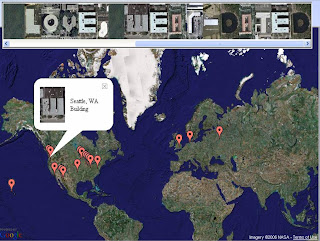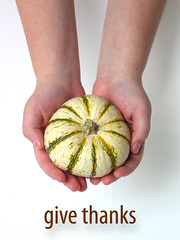Image courtesy of Envirosell.
I am a Paco groupie - and proud of it! What about you?
Paco Underhill is responsible for bringing anthropology and retail together. His first book -
Why We Buy [see Recommended Reading on
Flooring The Consumer sidebar] - is amazing in its observations, practicality and insight. It changed my world, and my appreciation for the retail experience. [Many thanks to Peter Smallman and Doug Ehrlich from
Image Zone for setting me on the Paco path!] I reread it regularly, and preach its lessons at every opportunity!
Paco is fascinating to read, projecting strong passion for the people whom he observes and what they go through as they maneuver the retail world. He wants their retail experience improved. He is amongst the first to notice signs of changing consumer habits, and, most important, his observations withstand the test of time....
Consider this 10/1999 Fast Company article titled
How We Sell by Keith H. Hammonds. It gives you a flavor for how Paco's company
Envirosell operates [i.e., with googles of video tapes of consumers in action!], and a firsthand feel for the "
incredibly valuable facts... [that] are also significant observations about business, work, and the act of finding -- or being -- a customer."
Some extracts:
+
"Increasingly, in our time-pressured culture, retailers are recognizing the importance of purchase decisions that are made or that are heavily influenced at the point of sale."
+ "...Consumers are eminently more cynical ... more experienced. Our tempers are shorter, and our patience is thinner. As consumers, we are becoming aware of our power -- the power to pick up our toys and go home, or to go to somewhere else to play."
+ "There's still something called "retail magic," where someone is able to put something out there in a way that makes us fall in love with it and have to have it."+ Retailers can do a better job addressing the needs of several "ignored groups":
seniors, women and ethnic groups. "
Often, marketers have no real sense of the ground. Where is my store?.... who's coming into [my] territory."
+
"There are a number of ... small ideas that are fundamentally clever, that cut through the clutter, and that work." [e.g., chairs -- see below]
+ In terms of the web: "
it can play an important role by forming a bond between the cyberworld and the physical world so that they support each other."
Paco's
Principles for Retailers encourage getting shoppers to spend more time inside a store shopping [i.e., the longer they stay, the more likely they are to buy!]; not providing too much information to shoppers within the 'transition zone' [i.e., your entry foyer], rather letting them decompress and get the lay of the land; remembering that shoppers have
Two Hands, and need to use them to interact with your goods. Did you know that mirrors slow people down [and banks hurry them along]? Men like to get in/out of stores expeditiously, so help them do so! And, "
by 2025, nearly one-fifth of the American people will be 65 or older." Have you considered how to meet the needs of these wealthy consumers? [Start with good contrast on your signage and make sure the font isn't too tiny!].
CBC marketplace shares this 11/7/2000 article titled
Paco Underhill: Shopping Scientist summarizing comments Paco made while speaking with the Retail Association of British Columbia: "
the retail industry is undergoing a fundamental shift - it's all about the consumer.... Retailers have to cater to the behaviours of the consumer in order to increase their chances of selling successfully."
"Underhill's research has shown that 70 percent of shoppers are women. It has also shown that retailers don't always make their shopping experience rewarding.... A store can do something as simple as providing a chair in a convenient location.... "A chair is not an amenity," Underhill observes. "It's a marketing tool." And, don't forget about kids! "
The important role for the store is turning kids into allies." His
"biggest complaint about the shopping experience, is the lack of it, in some stores." And, finally, be sure to
respect the consumer!
The article includes
Shopping Facts about shopping surveillance findings, what shoppers love and what they hate.
Entrepreneur's 12/2001 article titled
Attention Shoppers! Paco Underhill knows what they look at, what they buy and why.... explains that "
converting browsers into spenders greatly depends on store design and displays, because 60 to 70 percent of purchases are unplanned." Pay special attention to
sightlines as they affect how successful a retailer is in drawing a consumer in.
My favorite:
"A store window needs to communicate beyond the people immediately in front of it. Windows should have one message, not 15. They need to change no less than every two weeks to get people coming back. People should look forward to window displays as a place to have fun. MTV has shown us the importance of focusing on icons rather than words, using visual puns and symbols of having a good time."
Paco refers to the "butt-brush" factor and the importance of
avoiding narrow aisles if a retailer wants to appeal to women consumers. Some other factors to consider: good lighting, strategically placed chairs [and reading material], and not forcing consumers to bend over or get on the floor to interact with product [I have had to sit on the floor, even while pregnant, just to examine merchandise -including carpet samples- and I really resented having no other option. ]
Don't forget about extending your merchandising into the register area. Can you create an opportunity for an add-on sale or a reason to extend the relationship beyond this one transaction? According to Paco
"everything should be for sale in the store... even if they don't buy, you want them to walk out with a better sense of what your store offers..."
Finally, "
if it isn't fun, people aren't going to come back."
Eric Mattson at
MarketingBlurb posted
Paco Underhill Chimes In On Branding which pointed me to Liz Danzico from
Boxes and Arrows. She shares this 11/28/2006 interview with Paco Underhill titled
From Data to Wisdom.
He refers to these fascinating consumer changes afoot:
+ "
our visual language is evolving faster than our written and spoken word." In other words, we
respond faster to symbols than we do to spoken or written words. Compounding this is the disconnect between the average age of consumers [above 40] and of those designing communications [under 30].
+ "
we live in a world that even in 2006 is owned by men, designed by men, managed by men, and that we expect women to participate in." In other words, for the majority of retailers, it's
critical to consider how female-friendly your store experience is, and if it isn't how can you fix things?
+ "
the perception of ease is as important as the reality of ease" given how time-stressed most consumers are. Although Paco give an online example of this, it is just as relevant in-store: is your store as inviting and exciting to a new customer as it is to a repeat customer?
The challenge for retailers today is figuring out how to differentiate themselves to the consumer, how to make products
relevant to each individual who comes through the doors, and reaching interested customers more efficiently than ever before.
I was particularly excited to hear that Paco is currently working on a book about "
how the changing aspect of women is affecting the design community." I bet that will be an interesting read!
Experience Paco for yourselves via any of these 3 recent video clips of
Paco Underhill where he encourages retailers to treat shoppers well and build a relationship with them. Also, recognize that a neophyte will have different needs vs. an expert shopper and that a successful store needs to recognize and accommodate both. Paco makes specific points relating to the Gap and Best Buy in these clips, and generally shares his fascination with retail as a dipstick for changes in our culture.
The 12/4/2006 Los Angeles Times features a really fun article titled
Hunter-gatherer, bargain shopper by Janet Cromley which draws strong parallels between modern day bargain shopping and prehistoric hunting and gathering.... Remember that times are a changing and roles may be shifting! "
It used to be that we celebrated what we purchased," says Paco Underhill... "Now it's a celebration of what we paid for it ... [and] how little they spent." "The prey is a sale item." And, 'extreme shopping' is an opportunity to bond.
[The other person referenced is Raymond Burke, business professor at Indiana University, whose
10 Principles of Retail Shoppability I often refer to in presentations.]
If Paco were observing your store, what would he notice? Do you have chairs in-store? How woman-friendly are you? What about the kids? How fun a retail experience have you created? When was the last time you updated your windows? The answers will determine how successful a carpet/flooring business you have and will have for years to come!
Technorati Tags:
Paco Underhill,
retail anthropology,
marketing to women,
retail experience
 With 2007 almost upon us, I thought I would share some observations of trends to be aware of for the new year.
With 2007 almost upon us, I thought I would share some observations of trends to be aware of for the new year.












